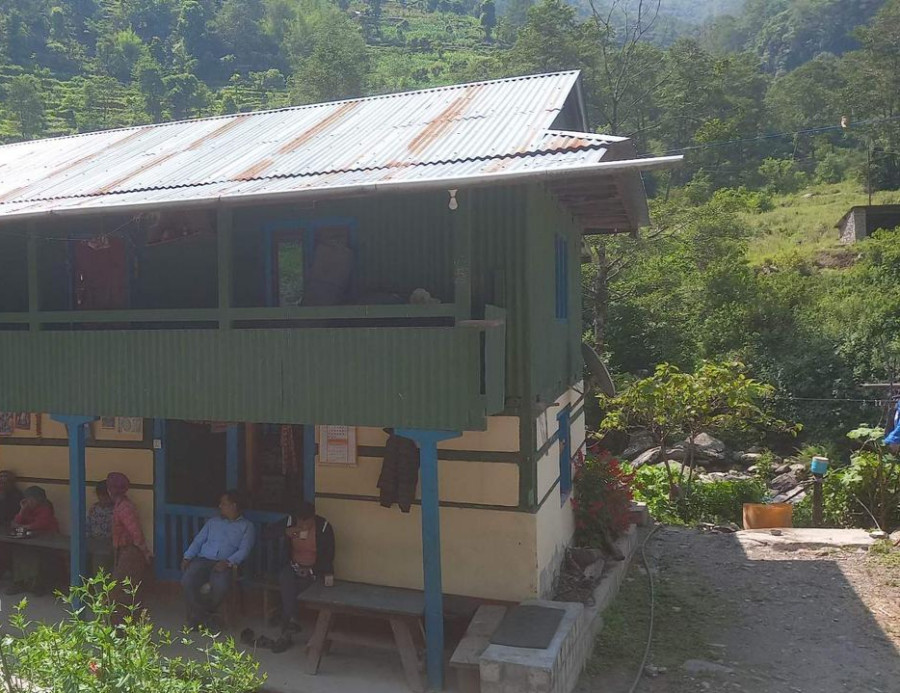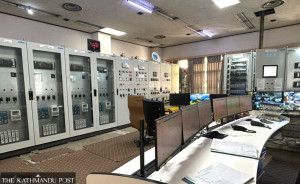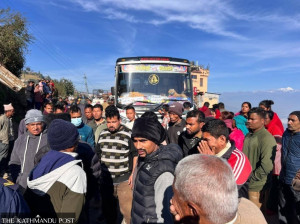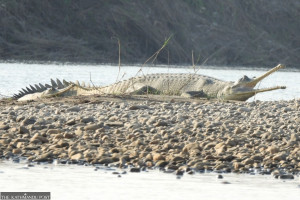Bagmati Province
16 families living near Likhu-2 hydropower project relocated after suspected tunnel leak
Locals blame the project for water seepage in surrounding settlements. The cause of the seepage is yet to be determined.
Tika Prasad Bhatta
Bimala Karki, a local of Pakernas in Umakunda Rural Municipality-1, who has a family of three, has lived in fear ever since the land around her house started turning muddy due to water seepage. Her house is located downstream of the Likhu-2 Hydropower Project.
On Monday, the Karki family was relocated to Koryam settlement, locally known as Thado Khola in Umakunda-1, along with 15 other families who were at high risk of landslides and erosion due to water seepage.
The locals suspect a leak in the tunnel of the hydel project as the reason. On May 11, the tunnel underwent a test, after which the surrounding settlements have been suffering from seepage.
According to Sher Bahadur Sunuwar, chairman of Umakunda Rural Municipality, a total of 42 families in Pakernas and the vicinity are at high risk due to the leak.
Forty-two families are still living in high-risk areas. The local unit is waiting for a report from the technical team to find out the reason behind the seepage and to conclude whether a leak in the tunnel is responsible.
“After the testing on May 11, water started seeping out from the ground and slopes. This has never happened before. My family is in a safer place, but the remaining 23 families are still living in constant fear of a landslide if the tunnel work continues,” said Karki.
Twenty days ago, 24 families who are at risk of disaster filed a petition against the project, demanding their relocation to a safe area. But the project dismissed the allegation of the locals that the project was responsible for the seepage.
Project officials claimed that the water was not seeping from the tunnel but from natural sources and, thus, did not see the need for relocating the people. After the failed petition, the agitated locals padlocked the powerhouse and the project’s office to press their demand for relocation. The padlock was later removed on May 26 following an intervention by the district administration office.
Sunuwar, who inspected the site after complaints from the villagers, said that he believes the tunnel leaked during the latest testing causing the water to seep. “Water is seeping in several places where there were no water sources, and the amount of water is increasing every day,” said Sunuwar. “While the project refused to help, we had to request the district administration office to intervene.”
According to Anita Niraula, the chief district officer of Ramechhap, even after repeated requests from the district administration office, the hydropower project did not stop sending water to the tunnel. “They also refused the request of the district administration office to relocate locals and pay compensation, after which the district administration office asked the Department of Electricity Development for help,” said Nirauala.
Following the instructions of the department, the project stopped sending water to the tunnel on June 1. The project has called two teams of experts to inspect the tunnel and the project site and they have yet to submit their report.
The district administration office held a meeting with project officials on June 3, where Dipak Sharma, a representative of the hydropower company, agreed that they would close the tunnel and help relocate 16 families that were at higher risk to safer places.
Another team of technicians from the Nepal Electricity Authority and Department of Electricity Development reached the site on Monday and started their investigation on Tuesday, said Niraula. “We have requested the team to submit a preliminary report within three days of inspection. We are constantly coordinating with the locals and the project to resolve the issue as soon as possible,” she added.
The 55-megawatt project, constructed by Dugar Group using the water of the Likhu River that flows through the border of the Ramechhap and Solukhumbu districts, is in its final stage of construction.




 18.12°C Kathmandu
18.12°C Kathmandu (1).jpg)














